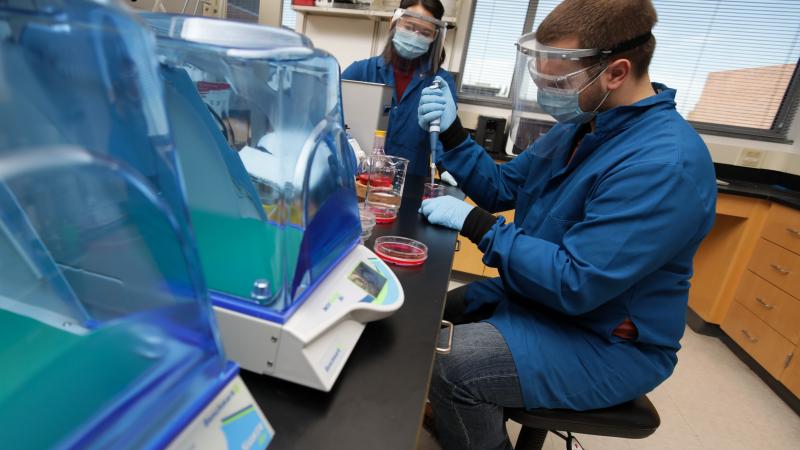Engineers explore protein self-assembly as improved coating process
April 15, 2021

Fouling is a natural phenomenon that describes the tendency of proteins in water to adhere to nearby surfaces. It’s what causes unwanted deposits of protein to form during some food production or on biomedical implants, causing them to fail. Researchers at Rensselaer Polytechnic Institute are harnessing this process, which is typically considered a persistent challenge, to develop a versatile and accessible approach for modifying solid surfaces.
“The goal of this work is to develop a method that is tolerant of pretty much any material and geometry by which we can modify surfaces that are normally hard to modify,” said R. Helen Zha, an assistant professor of chemical and biological engineering and member of the Center for Biotechnology and Interdisciplinary Studies (CBIS) at Rensselaer. She is leading this research with the support of a more than $592,000 National Science Foundation Faculty Early Career Development (CAREER) grant.
Surface modification is often necessary to protect or enhance a material or device. In biomedical uses, for instance, a surface coating may be essential for the body to accept an implant and prevent bacterial growth.
“Professor Zha’s innovative approach to developing more effective and biocompatible coatings could have wide-ranging significance in the area of human health,” said Deepak Vashishth, the director of CBIS. “This NSF CAREER Award speaks to the transformative and broader impact of Professor Zha’s work.”
The conventional process of surface modification often requires complex chemistry, expensive equipment, and hazardous chemicals. In contrast, Zha and her team will use silk fibroin — a protein that naturally assembles itself — to grow a nanoscale film on the surface of an object. This approach only requires a beaker, water, salt, and the protein, which Zha said makes it safe, ecofriendly, and accessible beyond the walls of a lab.
“We are actually growing the coating from the surface of the material itself,” Zha said. “That allows us to achieve very thin, very conformal, and very adhesive coatings without having to use harmful reagents that aren’t biocompatible.”
Zha has demonstrated that this approach can work and, in some cases, even increase the therapeutic benefits of an implant. In research published in ACS Biomaterials Science & Engineering, Zha collaborated with Ryan Gilbert, a professor of biomedical engineering at Rensselaer, to modify the surface of a fibrous scaffold that was developed by Gilbert’s lab in order to encourage the growth of neurites at the site of nerve damage.
“We used our coating procedure to grow our silk coating on the surfaces of these fibers,” Zha said. “We found that, by just giving the scaffold this coating, nerve cells attached a lot better and they extended neurites a lot further on the scaffold, which can ultimately lead to improved clinical outcomes in nerve repair.”
The importance of this research could expand beyond the protein Zha and her lab are working with. This approach, she explained, could be applied to any number of proteins and macromolecules.
“The universality of these methods we are developing, combined with how easy they are, is really exciting for me, because that really makes it incredibly versatile and accessible for all communities for a variety of different applications,” Zha said. “I think that’s very powerful.”